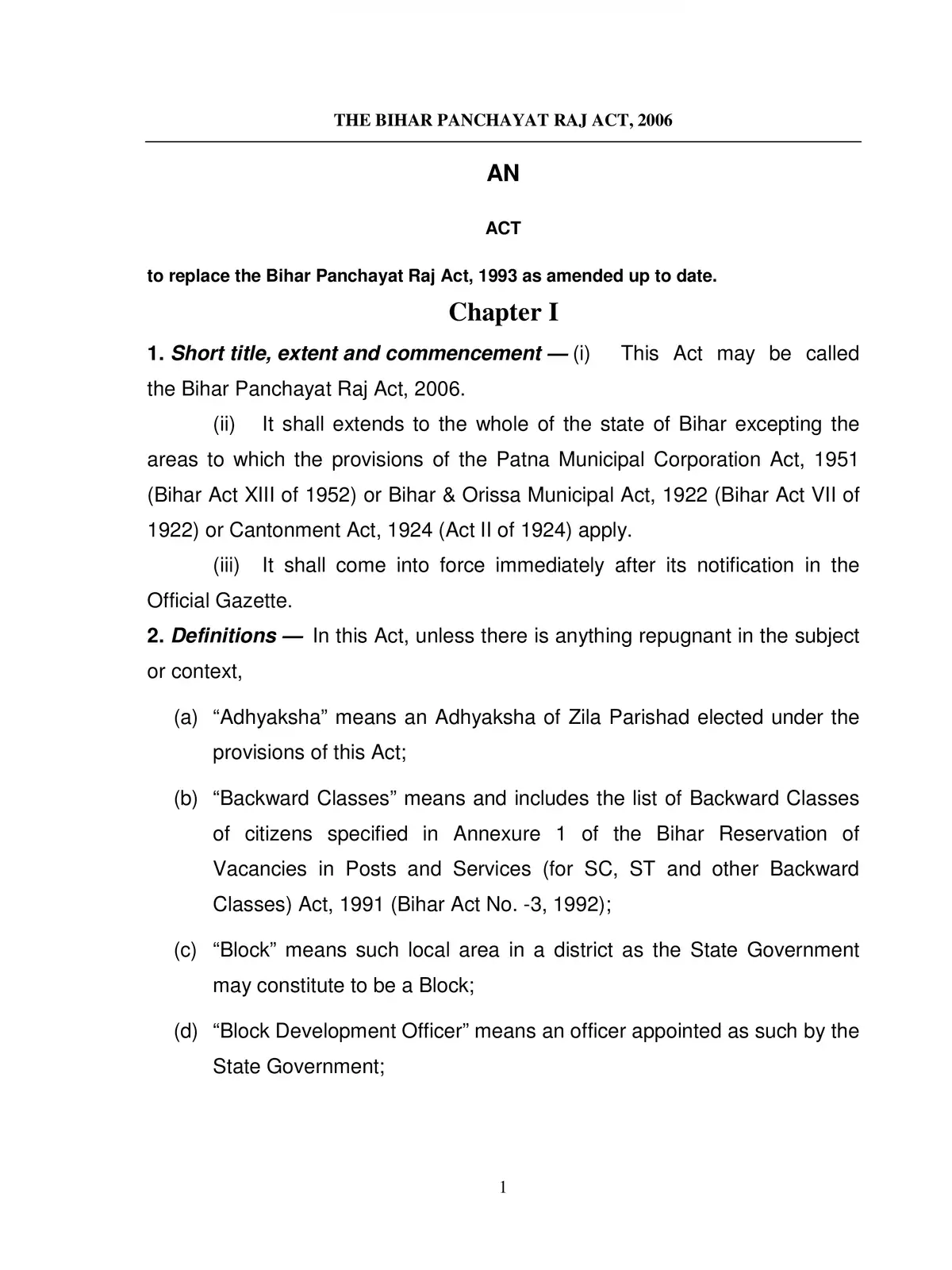Bihar Panchayati Raj Act 2006 - Summary
The Bihar Panchayati Raj Act 2006 is a significant law that replaced the earlier Bihar Panchayati Raj Act 1993. This key legislation is relevant to the whole state of Bihar, except for regions controlled by the Patna Municipal Corporation Act, 1951 (Bihar Act XIII of 1952), the Bihar & Orissa Municipal Act, 1922 (Bihar Act VII of 1922), and the Cantonment Act, 1924 (Act II of 1924). It plays an essential part in enhancing local self-governance in rural Bihar.
Key Features of the Bihar Panchayati Raj Act 2006
This act creates a clear structure for the formation and operation of Panchayati Raj institutions in Bihar. Panchayati Raj means a system of local self-government in villages. The act is designed to empower local communities by giving them greater authority over their own development.
Some important features include:
- Structure of three-tier system: Gram Panchayat, Panchayat Samiti, and Zila Parishad.
- Provision for regular elections to ensure that everyone can participate democratically.
- Clear roles and responsibilities for elected members, which helps improve accountability.
Significance of the Act
Through the Bihar Panchayati Raj Act 2006, the state of Bihar seeks to foster grassroots democracy. This ensures that the local needs and priorities are addressed effectively. It also promotes involvement from all sections of society, making governance more inclusive.
For more details, you can download the PDF version of this act and dive into its provisions. Don’t miss your opportunity to learn how this important legislation is transforming local governance in Bihar! Download the PDF now! 📄
